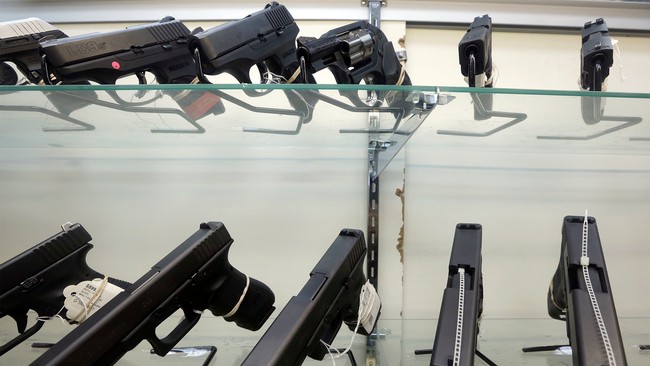You know, every time I get on a roll with electric vehicles and their various shortcomings – like flames and such – there are always the sunny optimists in the crowd who believe hybrids are the future. This includes the head of Toyota, so it’s not only my beloved mechanical wonks here in the comments.
And there have been, in fact, tons of them happily zooming along on the roads for ages. These were the Prius-era, regenerative braking hybrids, which are still available.
Actually, when we got our Grand Highlander a year ago, there was a really sharp-looking hybrid version on the lot closer to the interior colors we had been looking for (the trim package we wanted was so limited in availability) that, for a flash, we thought about it, but quickly recovered from the impulse.
It’s the plug-in hybrids (PHEV) that have gotten popular which seem to be experiencing some EV-type issues, and none more so right now than the snappy-looking Jeep 4xe and, to a lesser extent, the Grand Cherokees.
GlobalTrvlr sent me another StacheD video this morning – a new one I hadn’t seen yet. When I went digging around a bit on that particular Jeep itself, there was a bag of worms worth of issues people were complaining about, as well as plaguing the similarly equipped hybrid Grand Cherokee.
First things first, though. In Canada, at the beginning of this month, Jeep issued a notice to PHEV owners NOT TO CHARGE their vehicles for the risk of a fire.
That’s not very helpful when that’s why you bought the darn thing to begin with. They were ‘working’ on a fix – hello.
Jeep asks PHEV owners to not charge due to fire risk
Some 20,000 hybrid Wrangler and Grand Cherokee models are covered by the recall in Canada; a proper fix is still in the works
Stellantis is recalling 20,753 of its Jeep models in Canada, as well as another 320,065 in the U.S. The recall only affects certain vehicles from the brand, specifically the 4xe plug-in hybrid (PHEV) trims of the 2021-2025 Jeep Wrangler and 2022-2025 Grand Cherokee, as the issue involves a high-voltage battery that can cause a fire.
According to the recall report on the National Highway Traffic Safety Administration’s (NHTSA) site, the affected SUVs “may have been built with a high voltage (‘HV’) battery pack manufactured with cells which may be susceptible to separator damage.” The report notes that the separator damage combined with other cell interactions can cause the fire whether the vehicle is parked with the ignition off, or running. The driver will not be warned prior to this happening, but Stellantis says there is less of a risk when the PHEV’s battery is depleted.
In the US, Jeep pushed an electronics update in mid-October for the vehicles that, to put it kindly, ‘bricked’ a whole lot of owners Jeeps.
A firmware update has bricked Jeep 4xE plug-in hybrid models over the weekend. The update was for the car’s telematics module. Users who installed it reported losing power to their electric engines and getting stuck on public roads. Jeep canceled the update once reports started… pic.twitter.com/fqs6inFZhj
— Dawood Sajjadi (داود سجادی) (@5tuxnet) October 16, 2025
How helpful!
So, here’s what Jeep says. It’s the telematics box, which as far as I understand it does diagnostics and ota communications, that’s causing the problem. This is the sort of thing I worried about buying a new car, especially a Jeep 4xe. Oh well. https://t.co/UHAb4C96rZ pic.twitter.com/5PXYBWeT9e
— Stephen Gutowski (@StephenGutowski) October 11, 2025
People were already pretty frickin’ hot about the repeated gremlins. There’s ‘working the bugs out’ and then you just start wanting dead bugs.
@Jeep @StellantisNA our #jeep 4xe just went haywire after the update. Interior dash, lights etc. rotating between error messages, flashing and shorting out. It is inoperable. Resetting it by disconnecting the 12v did nothing. This is our 4th year dealing with this. What crap.
— Michael Manley (@ManleyMichael) November 8, 2025
And then came the North American recall of 228,000 vehicles due to?
You guessed it – fire.
Jeep Is Recalling 228K Plug-in Hybrid Wrangler 4xe Models Due to a Potential Fire Risk https://t.co/g1AgRHUS4L
— Car and Driver (@CARandDRIVER) November 9, 2025
Warning drivers not to plug the vehicles in and make sure that sucker’s parked outside.
Jeep SUVs Recalled Again for Fire Risk; Owners Warned to Park Vehicles Outside
Plug-in hybrid Grand Cherokee 4xe and Wrangler 4xe models may catch fire due to battery failure
Jeep is recalling over 320,000 plug-in hybrid SUVs because they may catch fire while parked or driving. Until a free fix is ready, the automaker says that owners of 2020 to 2025 Jeep Wrangler 4xe and 2022 to 2026 Grand Cherokee 4xe models should park outside and away from structures and not plug their vehicles in to charge.
Could catch fire while ‘parked or driving’?! Okay. There is not much left for a vehicle to do if it can’t safely do those two things.
The recall has now expanded to 375,000 Jeep vehicles
Stellantis said Tuesday it is recalling 375,000 plug-in hybrid Jeep Wrangler and Grand Cherokee SUVs worldwide over battery failure after 19 reports of fires, and urged owners to park outdoors until a fix is completed.
The recall covers some 2020 through 2025 Jeep Wrangler 4xe and 2022-2026 Jeep Grand Cherokee 4xe SUVs.
The company said a recall remedy is imminent but, until then, owners should park away from structures and refrain from charging vehicles because of fire risks.
Stellantis told the National Highway Traffic Safety Administration it had reports of 19 fires and one injury linked to the issue. About 320,000 of the recalled vehicles are in the United States.
The automaker said the batteries were produced by Samsung SDI. An investigation by Stellantis and Samsung SDI determined that a fire earlier this year was caused by the same defect reported in the 2024 recall of 154,000 plug-in hybrid Jeep EVs after reports of two injuries.
Vehicles that were repaired after recalls in 2023 and 2024 will need to be fixed again, NHTSA said.
So the previous ‘fix’ is going to have to be refixed, too. Terrific.
StacheD’s video is pretty dramatic, illustrating what the PHEV looks like when the battery goes into thermal runaway..
The video also has hugely important safety tips in it, such as DO NOT BREATHE the off-gassing coming out of the vehicle. The white smoke indicates thermal runaway of the lithium-ion battery, so you are dealing with toxins galore to begin with. A man, meaning to be helpful, walks up, opens the rear door of the burning Jeep, where a cloud of fumes pours out, nearly enveloping him, and he calmly sprays a dry chemical extinguisher in. Of course, it does nothing.
He’s just a helpful passerby – not a fireman. No breathing apparatus, nothing. As StacheD says in the video, it’s a lucky thing it’s a windy day, or those clouds could have done him serious harm quickly had they remained around him.
Now, again, the rate of fires in EVs and PHEVs is statistically lower than in ICE vehicles, according to everything I’ve found, but no one has ever told me to park my gasoline or diesel outside because it could spontaneously combust. Additionally, I have had friends use their hefty home fire extinguishers to extinguish roadside car fires after offering assistance to someone in need.
All you can do with an EV is pray everyone gets out and let the emergency responders take over, as we’ve said time and again.
Electric vehicle fires stem from thermal runaway, which occurs when a battery cell short circuits and heats up uncontrollably. This may happen in a serious crash if the battery is damaged and compromised.
That differs from a vehicle with an internal combustion engine that runs on gasoline or diesel fuel combustion. Such cars may suffer from overheating, leaking fuel lines or other system failures that could lead to fires.
Though EV fires are less likely to occur than other vehicle fires, an EV fire burns at a hotter temperature, releases flammable gasses and runs the risk of reignition even after being extinguished.
Unlike other fires, EV fires involving lithium-ion batteries also require greater resources to put out, such as fully submerging the vehicle in water or using a particular foam meant for lithium fires.
So there we have the latest on that.
Thanks again to GT for the heads up.
So many gremlins still to be chased.
At HotAir, we’ve been dealing with real government suppression of free speech for YEARS. Despite the threats and consequences, we refuse to go silent and remain committed to delivering the truth.
But we can’t do it without your support.
Please help Ed, David, John, and me continue fighting back against government censorship by joining our terrific HotAir VIP community today. Use promo code POTUS47 to receive 74% off your membership.
And thank you so much again for being here with us at HotAir.
Read the full article here






![Dem Senator Kaine Claims He ‘Didn’t Understand’ Why He Voted ‘No’ on Funding Bill [WATCH] Dem Senator Kaine Claims He ‘Didn’t Understand’ Why He Voted ‘No’ on Funding Bill [WATCH]](https://www.lifezette.com/wp-content/uploads/2025/09/2025.09.04-01.14-lifezette-68b990ac04fe0.jpg)
![Antifa Violence Fails to Stop Packed Turning Point USA Event at UC Berkeley [WATCH] Antifa Violence Fails to Stop Packed Turning Point USA Event at UC Berkeley [WATCH]](https://www.lifezette.com/wp-content/uploads/2025/09/2025.09.17-02.39-lifezette-68cac80b1fa2f.jpg)



